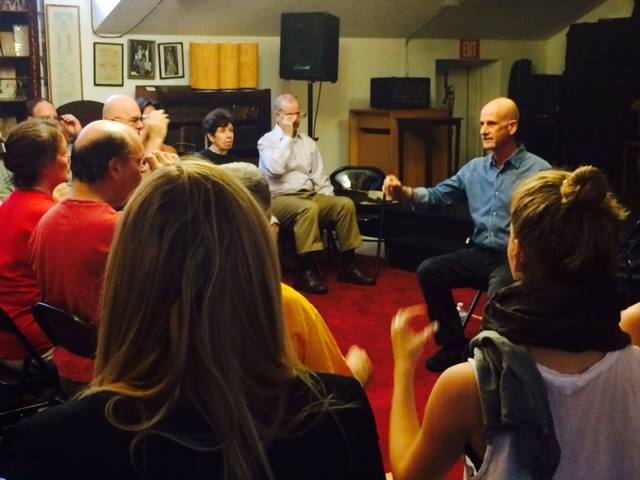
Effortless up with the Alexander Technique
Yesterday a student told me that he thought it took work to sit or stand or move using the principles of the Alexander Technique. If he just sat the way he always sat, he said, it took very little work and felt comfortable. I can’t disagree that it is comfortable to sit, stand, move and walk in our habitual way. I do disagree that it doesn’t take work. A lot of our habits, though comfortable, are not without work.
How does the Alexander Technique work? The Alexander Technique works by identifying our habitual unwanted tension, and it works by teaching us how to release it. We may be working quite a bit when we slump (for example) as some muscles are working more than they need to. Coming out of a slump and sitting up really straight also takes work. The Alexander Technique works by showing us that a lot of this work is unnecessary, and teaches us how to work less. The Alexander Technique works because you use it while you go about your life, so that eventually you are working on the Alexander Technique, or practicing the Alexander Technique as a way of life.
Does it take work to make the Alexander Technique work? Living more in line with Alexander Technique principles definitely takes work of a sort. Walter Carrington, from his book ‘Thinking Aloud’, says: “It is absolutely necessary to remember that all living things, trees and shrubs, and you and me included, have to have a means of generating the energy that will overcome all the forces and influences that seek to get us down. Now, life is full of influences to get us down. Emotional, psychological, and of course physical. Though we think immediately of gravity, psychological forces are just as powerful in many cases in forcing us to sink down.” He goes on to say that we interfere with this upward energy with our mood and state of mind. It takes muscular effort, or work to move against this force, but that is secondary to sensory awareness and sensory input. The muscular system works relative to the sensations and feelings of what the sensory mechanism registers. When you pull your head back and down, which is the habitual work we do, the bottom semi-circular canal is no longer horizontal with the ground, making the readings less accurate, and that constitutes an interference. When we’re alert and active, there is a slight forward tilt to the head making the bottom canal horizontal. Walter says “…if you pull your head back you upset the orientation of the balancing apparatus. The energy to counteract the downward pressures can’t work effectively if the musculature doesn’t know where up is. So you release the neck to let the head go forward and that brings the sensory mechanism of balance into better working order. Then you go up.”
Originally Alexander called primary control ‘primary movement’, and the primary movement is up. Walter Carrington again: “you initiate the movement by undoing the catch, by taking the brake off. You’ve got this ongoing flow of energy that is seeking to take you up against all the downward forces, and going up is what happens when you release the neck.” Does the Alexander Technique work? Yes, it works by teaching you how to do less work in everything you do.
Mark Josefsberg-Alexander Technique NYC
(917) 709-4648










Leave A Comment